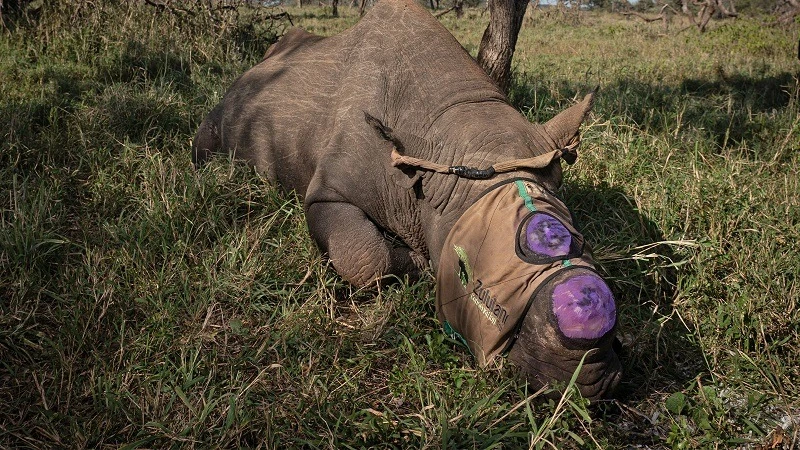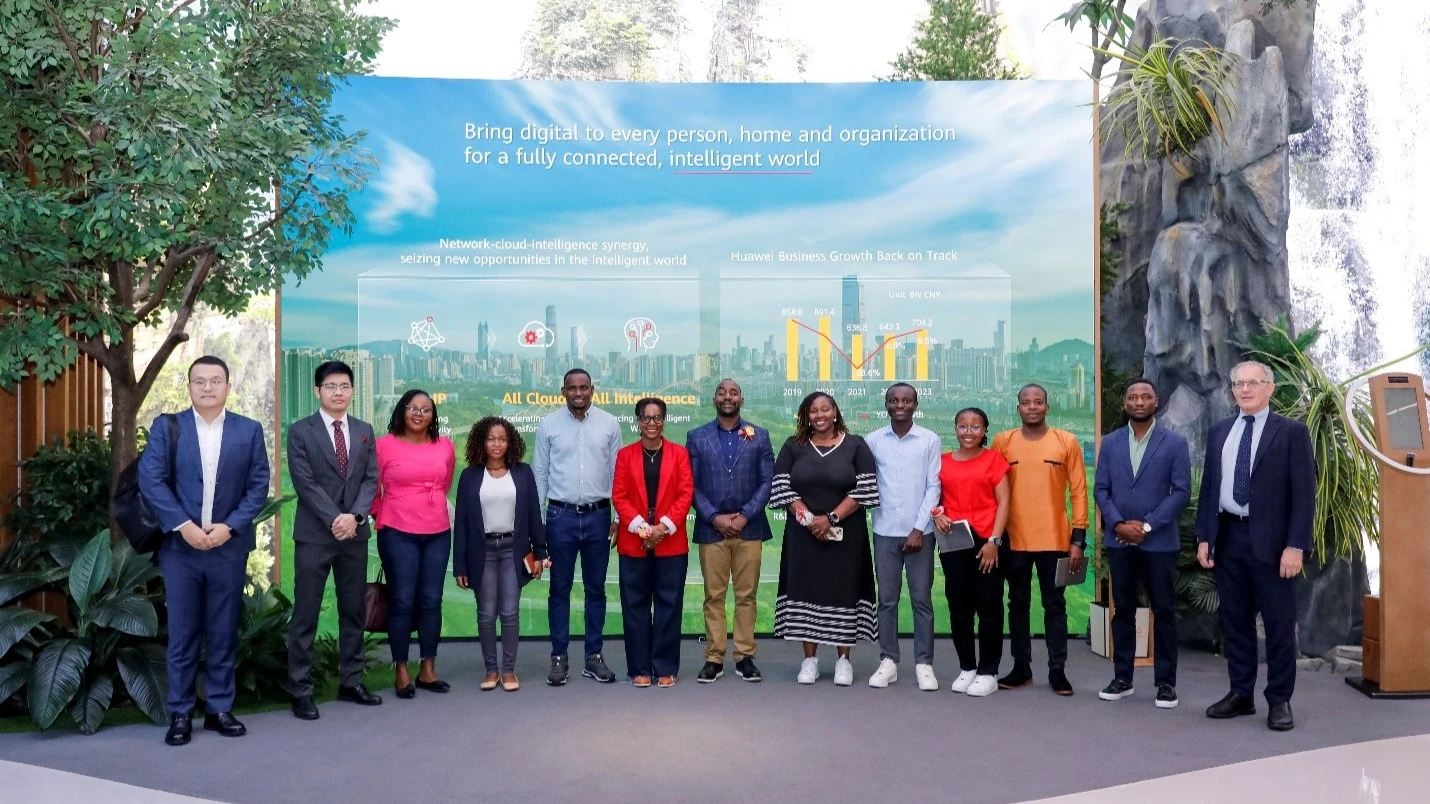SPECIAL REPORT: Rhino poaching rebounds after Covid-19 pandemic -3

After slowing down during the Covid-19 pandemic between 2020 and mid-2022, the rate of rhino poaching is regaining in some parts of Africa.
Reports show that there is a sharp rebound of the illegal rhino horns business, coordinated in the black markets.
However, in Tanzania, the black rhino populations are slowly increasing, as the government has bold legal approaches to fight the rich and powerful poachers.
This is happening when an estimated 2,000 rhinos from the world’s largest rhino populations will be introduced in conserved areas throughout Africa in the next two years.
Rhino poaching is conducted with the ill-intention of achieving three objectives, namely sports and recreation, production of traditional Chinese medicine and commodity stockpiling for investment purposes.
Economically, rhino poaching claims an estimated eight percent of the continent’s annual growth in gross domestic product (GDP).
According to the State of the Rhino Report 2023 by the International Rhino Foundation (IRF) the world’s five rhino species are under poaching threats.
Two species, black rhinos and greater one-horned rhinos, continue to slowly increase in numbers in the continent, while two species, white rhinos and Sumatran rhinos are declining.
The remaining species, the Javan rhino, has an unknown population trend status.
At the global scale, the greater one-horned rhino population in India and Nepal continues to grow, thanks to strong protection, wildlife crime law enforcement and habitat expansion.
Reports say factors causing rhino populations to decline are poaching and habitat loss on environmental related-issues, but climate change is increasingly impacting many facets of rhino survival.
Poaching for rhino horn is the greatest threat to all five rhino species.
Across the globe, rhino populations that were once considered less threatened have seemingly become the primary target of poaching efforts, which are orchestrated by highly organized, transnational criminal syndicates.
Across Africa, poaching patterns are changing. Since late 2022, poachers have shifted their focus from the largest rhino populations to smaller, perhaps more susceptible ones.
The report states that poaching still poses great threats to black rhinos (Diceros bicornis) which can currently be found in 12 countries across the continent estimated at 6,487 individuals.
At one time, black rhinos were the most common of the world’s rhino species as the report indicates there were as many as 100,000 throughout Africa in 1960.
By 1970, poaching had reduced the population to approximately 65,000 and black rhinos continued to decline precipitously until a low of about 2,300 individuals in the mid-1990s.
“Thanks to intense protection and management efforts, black rhino populations stabilized and despite ongoing poaching pressure, have increased by approximately 28 percent over the last decade,” reads the report.
On the other hand, between 2012 and 2021 white rhinos (Ceratotherium simum) have seen a decline.
During the reviewed period, white rhino numbers declined by 24 percent to an estimated 15,942. Although the number of rhino deaths has decreased since the most recent peak in 2015, poaching remains the biggest threat.
This journalist has established that on September 21, 2023, the International Union for the Conservation of Nature (IUCN) Species Survival Commission’s African Rhino Specialist Group (AfRSG) reported that there are now an estimated 16,803 white rhinos - the first increase for the species in over a decade.
According to the IUCN-AfRSG Report for 2023, rhino poaching has been decreasing since 2014, but on the contrary in the past two years the trend has significantly changed.
The report shows that in 2014 an estimated 1,324 rhinos of all species were poached across the continent. Poaching incidents decreased to 1,125 in 2017.
“In 2020 an estimated 503 rhinos were poached in Africa. The incidents suddenly surged to 539 rhinos in 2021 while in 2022 poaching incidents soared to 556,” reads the IUCN report.
It states that Namibia recorded the poaching of 87 rhinos in 2022. Kenya had no poaching incident while Tanzania had no report on rhino poaching status.
In South Africa 448 rhinos were poached in 2022, but the umber rose to 499 in 2023. Zimbabwe recorded 13 rhino poaching incidents in 2022.
In the fight to combat rhino killings, it is suggested in the report that African governments to explore and support innovative techniques to reduce the demand for rhino horns and to maximize penalties for its illegal possession and use.
The private sector is encouraged to support governments’ actions for rhino conservation by helping to guide local, national, regional and international conservation policies and plans.
The international community at the global level is being asked to actively disrupt wildlife trafficking networks by supporting research and analysis, intelligence gathering, investigations and wildlife crime prosecutions.
According to the United Nations World Tourism Organization (UNWTO), rhino poaching for the purpose of international trafficking of illegal wildlife products generally decreased during the COVID-19 pandemic.
UNWTO states that the numbers of both rhinos and elephants killed across Africa declined sharply in 2020 and 2021 compared with 2019, earlier and after the pandemic.
Worldwide quantities of illicit rhino horns, elephant ivory, and pangolin scales seized all declined dramatically from 2019 to early 2022.
“These declines are largely attributed to the disruption of transportation routes used by wildlife traffickers to move illicit goods within Africa and overseas by air, and in some locations to the effects of local lockdown measures,” reads part of the UNWTO report for 2022.
Latest report by Save the Rhino International states that as poaching pressure increases around the continent, the number of white rhinos, the most populous of the five species, continues to decline.
Namibia, home to the largest number of black rhinos in the continent and the world at large, saw a devastating 93 percent increase in rhino poaching from 2021 to 2022.
Black rhinos in Africa are a cautious success story, rebounding in the past few decades at a steady growth rate despite significant poaching losses.
However, poachers are reacting against new protective measures by governments as they are targeting other smaller areas, like province-run Hluhluwe Imfolozi Game Reserve, which has borne the brunt of South Africa’s rhino poaching deaths in 2022.
“These two positive trends demonstrate what human will and capacity can do when governments are committed, conservationists are dedicated and communities are engaged and supportive. With the right interventions, all five rhino species can rebound and thrive in the ever changing chaotic world,” reads part of its latest reports.
At the global scale, the International Rhino Foundation report for 2023 states that after recording no poaching incidents in 2022, India suffered two poaching losses in 2023, one in Kaziranga National Park and another in the Manas National Park.
Indonesia’s Ujung Kulon National Park, home to the world’s only population of Javan rhinos, has seen an alarming increase in incursion attempts since 2022.
The report states that Indonesia’s Ministry of Environment and Forestry has reported a recently discovered unnatural Javan rhino death that is currently under investigation.
Though the governments of India and Nepal did not conduct an official census in 2023, authorities believe the population is growing.
However, there are some bright spots. Greater one-horned rhinos continue to thrive due to strong protection and law enforcement.
To be continued.
Top Headlines
© 2025 IPPMEDIA.COM. ALL RIGHTS RESERVED

























